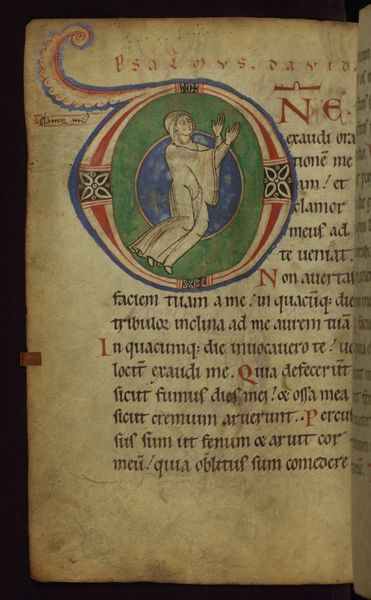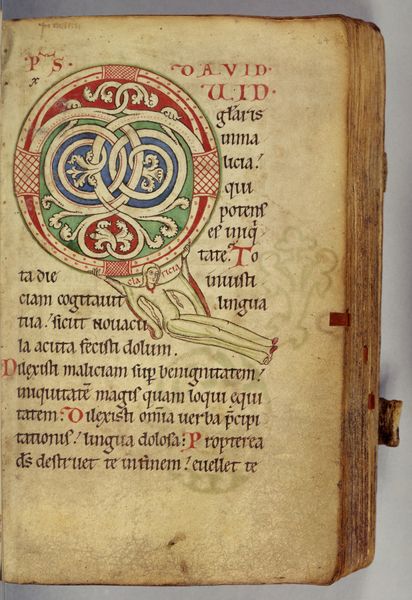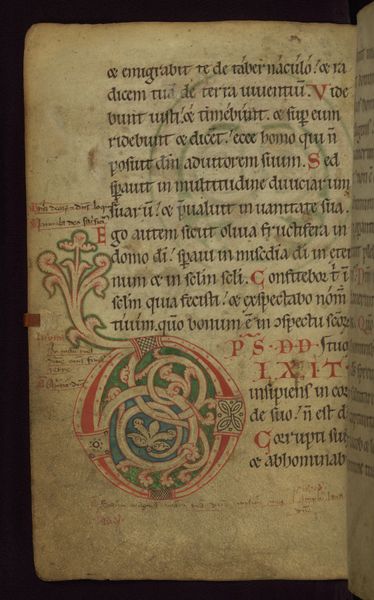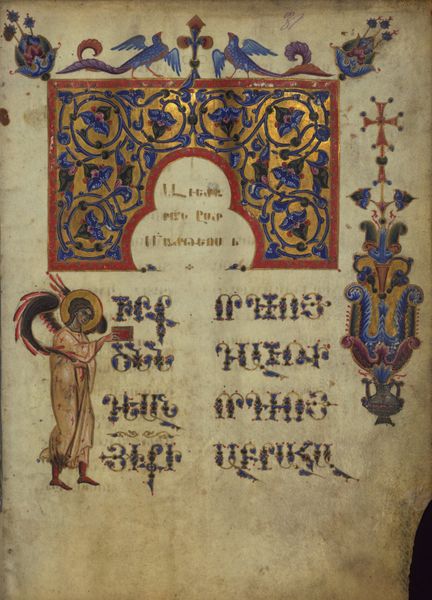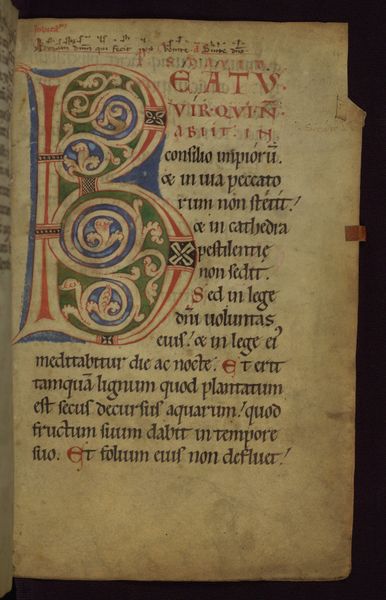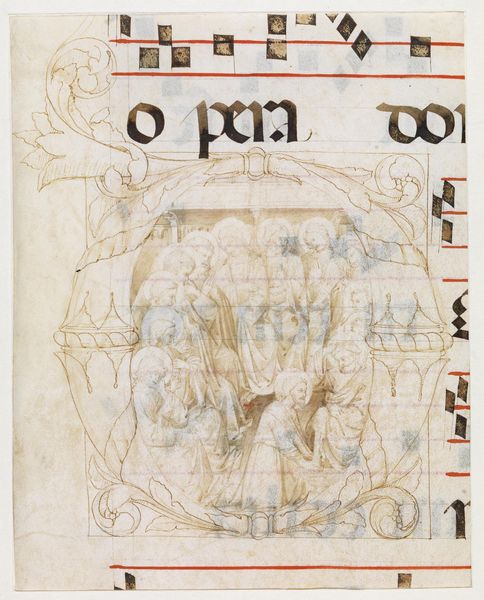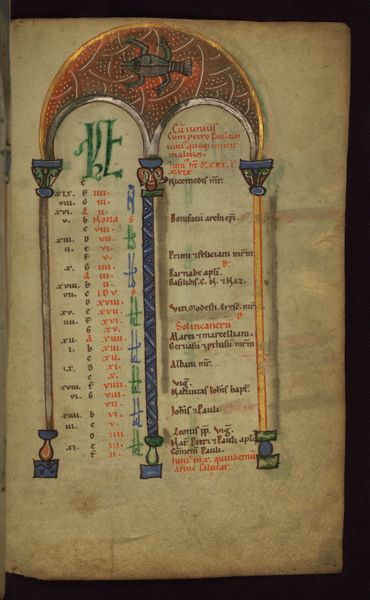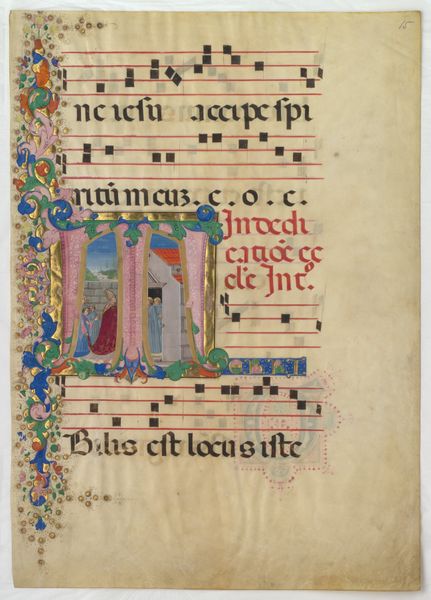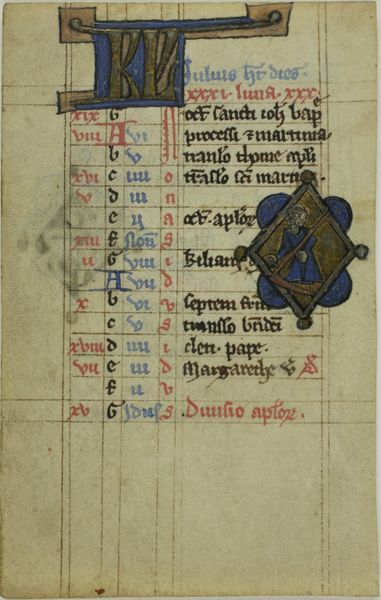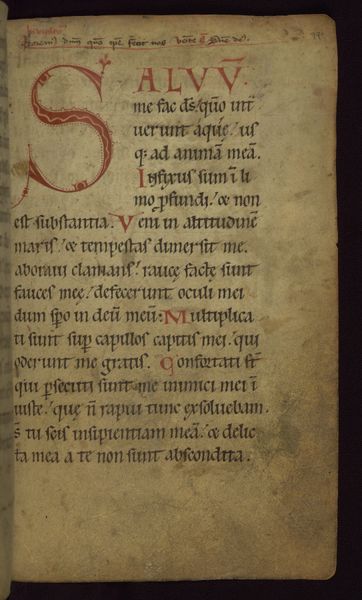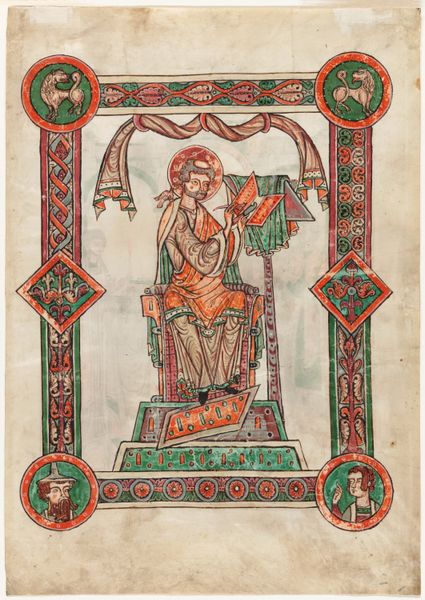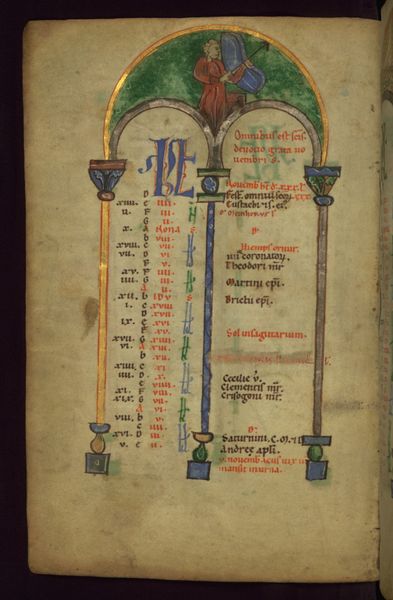
drawing, ink
#
drawing
#
byzantine-art
#
medieval
#
ink
Copyright: Public domain
Curator: What strikes you first about this depiction of the "Holy Bishop Nicolaus," executed in ink drawing? Editor: There’s a formality, wouldn’t you say? An almost iconic stiffness. It's interesting how the artist uses such spare lines and subtle washes of color. Curator: Indeed. This image emerges from the medieval period. It seems it’s part of a larger illuminated manuscript, juxtaposing text with the figure. You see how the figure of Saint Nicholas is meticulously inscribed within the text, making labor and artistry integral components. The saint is rendered here, seated on a throne-like structure with a halo about his head, an explicit association to high status and heavenly divinity. Editor: It's that throne I keep coming back to. Those carefully inscribed decorative motifs. And how they mirror and amplify those diamond forms throughout the Saint’s robes, to create such unity. How effectively these lines create an illusion of form within those simple geometries. Curator: Consider too the accessibility that Byzantine art allows in a time before widespread access to imagery. It brought visual culture within the grasp of medieval people by virtue of accessible, portable devotional objects in the form of illuminated manuscripts. Editor: I am intrigued by how it appears constrained by its architectural setting, almost like a relic held within the illuminated lines, and text. Note that controlled composition—the deliberate placement. It almost forces your eye upwards, to contemplate the spiritual and the divine. Curator: The use of parchment, made from processed animal skin, represents considerable material investment, underlining the Church's power. Ink, laboriously mixed from raw materials, underscores craft and knowledge required. Editor: Absolutely. It is really incredible how, despite the minimal color palette, the artist achieved such clarity. Curator: Reflecting on the image and its process, its material reality enhances our encounter, isn't it so? Editor: Indeed, understanding the formalism and structure lets me reflect upon the sheer visual language that connects the earthly and the ethereal, revealing volumes of history.
Comments
No comments
Be the first to comment and join the conversation on the ultimate creative platform.

